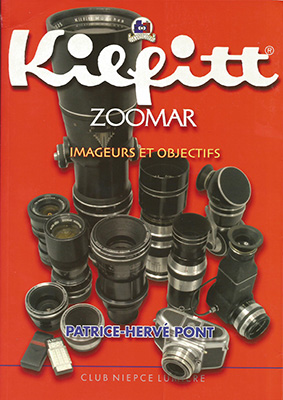|
Lens
mounts
As an independent manufacturer of
photographic lenses that were designed for use on
cameras from a wide range of different manufacturers,
Kilfitt offered interchangeable mounts for its lenses
and in theory, any lens could be mounted onto any camera
of that format or smaller. For instance, via a
suitable adapter, lenses designed to cover the 6×6
medium format could also be mounted on 35mm (24×36mm
format) cameras. Obviously, lenses could (or
should) not be mounted on cameras of a larger format
than the one for which they were designed, since the
image that they project onto the film will not cover the
larger format (and almost certainly will not focus to
infinity).
Kilfitt’s mounting system normally
consisted of two components:
- a base that was either part of the
lens or had been attached to it by various small
screws (four is the number of screws on the mounts
that I have seen)
- a camera mount that could be attached
to the base.
Over the years, Kilfitt developed its
interchangeable mount system, and I am aware of three
different systems that he/the company used.
Base Codes
The base for each system had a different
code:
- KI This seems to have been a
system used with the earlier lenses, principally for
35mm cameras (but also for the front end of the
Multi-Kilar converter, which can be used on Medium
Format cameras). Patrice-Hervé Pont (see below)
implies that this designation may be derived from the
word Kilar.
- AN This was used subsequently for
lenses for 35mm cameras and for some of the first
Kilfitt lenses for Medium Format. Patrice-Hervé
Pont says that this code is derived from the German
word Anschluss (connection).
- WE This system seems to be the most
common on later lenses for Medium Format cameras, but
also for some lenses (all later lenses??) designed for
other formats. Patrice-Hervé Pont says that this
code is derived from the German word Wechsel (change)
Patrice-Hervé Pont reports (on page 63)
that for the Pan Tele Kilar the AN system was used until
1966 and the WE system after 1966. He reports that
for some other lenses the WE system was introduced in
1964.
Camera
Mount Codes
The camera mount would be attached to the
base, which was permanently or semi-permanently attached
to the lens. “Semi-permanently” means that a user
or a technician with a small screwdriver and a steady
hand could remove the base and replace it with something
different. However, this is not a job to be done
“in the field”, nor normally to be done by the user.
Like the different base systems, each camera mount had a
code. For visitors to this website, the main
camera mount that is relevant has the code SI
(for “Praktisix” or “Pentaconsix”).
Thus, the full name of the
Praktisix/Pentaconsix camera mount for the WE base is WESI.
It would appear that the name of the
Praktisix/Pentaconsix camera mount for the AN base is ANSI
or ANSIX.
With three base systems, dozens of camera
manufacturers and dozens of Kilfitt lenses (each of
which had its own unique code), the number of Kilfitt
codes ran into the hundreds. Most of them (over 350
codes!) are listed in the book by Patrice-Hervé
Pont, although he states (p. 98) that his list is
certainly not complete.
Serial numbers
Kilfitt/Zoomar lenses have serial numbers
in two parts:
- a 3-digit prefix
- a serial production number usually
consisting of four digits, and rarely of five.
The two parts of the serial number are
separated by a hyphen: –
When different versions of a lens were
produced over time, the prefix number usually changed
between each version.
|
